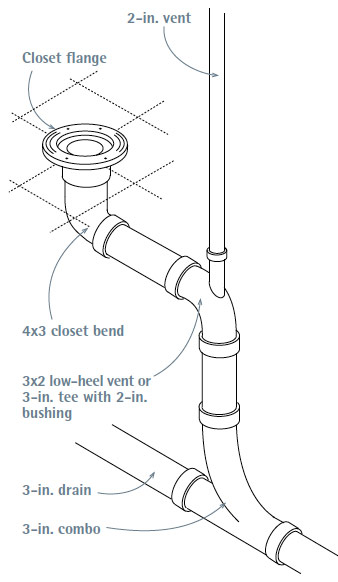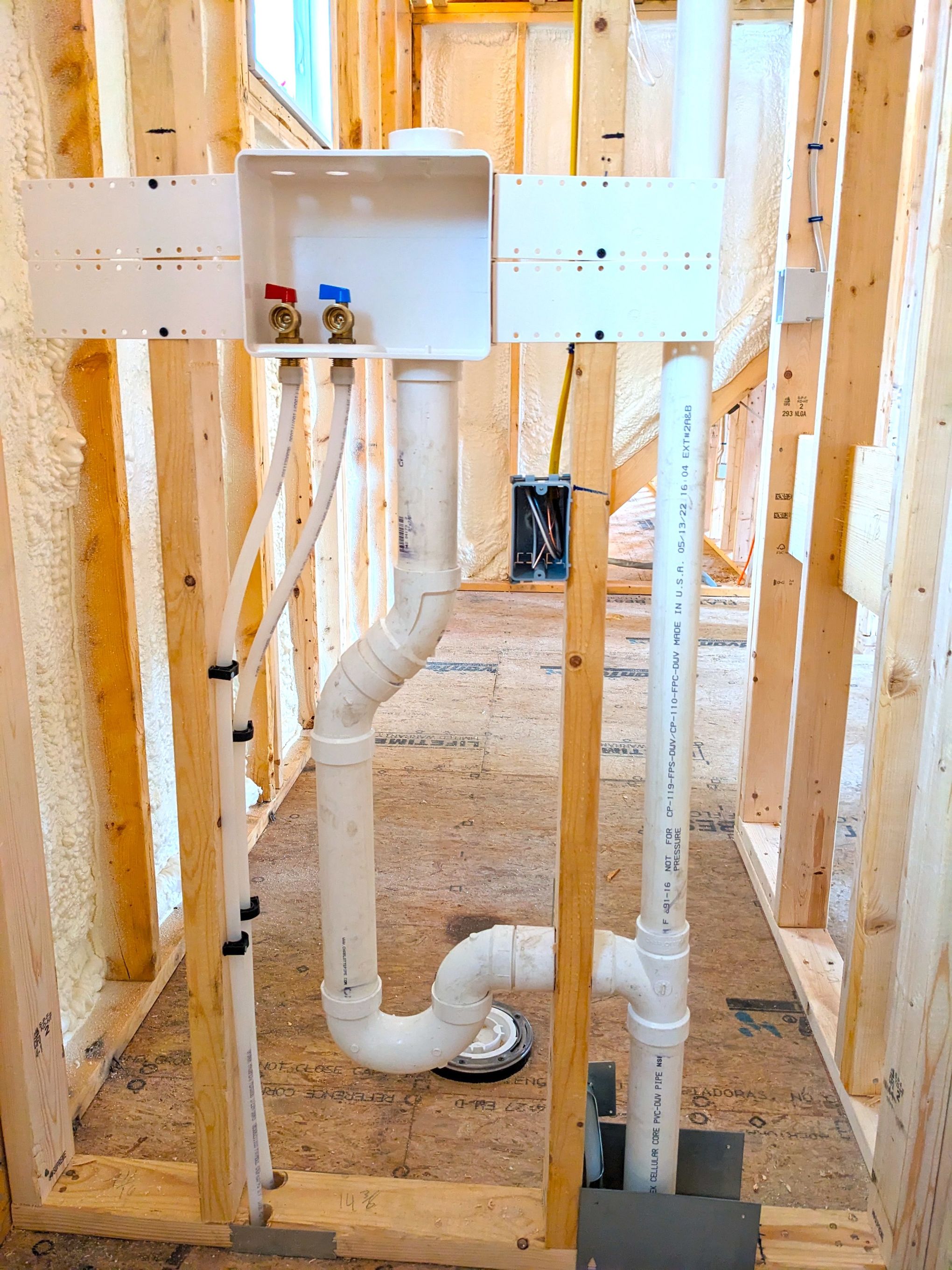Adequate Ventilation in Plumbing Systems: How It Matters
Adequate Ventilation in Plumbing Systems: How It Matters
Blog Article
Listed here down the page you can find a good deal of sound material pertaining to What Is A Plumbing Vent & How Do They Work?.

Proper ventilation in pipes systems is frequently forgotten, yet it is vital for preserving the functionality and safety of your home's plumbing. Ventilation assists manage air pressure, protect against the build-up of damaging gases, and guarantee the efficient removal of waste. In this guide, we will check out the significance of proper pipes ventilation, exactly how it works, and the benefits it offers your plumbing system.
Recognizing Air Flow in Plumbing
Ventilation in plumbing describes the network of pipes that allow air to stream via the drain system. These vents offer multiple objectives, including controling air pressure within the pipelines, preventing drain gases from entering the home, and assisting in the smooth circulation of wastewater.
How Ventilation Works in Pipes Solutions
Air Pressure Policy
Proper ventilation preserves balanced air pressure within the pipes system. When water streams via pipes, it displaces air. Without ample ventilation, this variation can develop unfavorable pressure, resulting in slow down drains pipes or siphoning of water from catches, which can create undesirable odors to seep into the home.
Avoiding Sewer Gas Accumulation
One of one of the most vital functions of pipes vents is to stop sewer gases, such as methane and hydrogen sulfide, from collecting within the home. These gases can present severe wellness risks and are very flammable. Vent pipes enable these gases to get away safely outside.
Aiding in Waste Removal
Air flow helps in the efficient elimination of wastewater by stopping airlocks in the drain system. When air can stream freely via the vents, it allows water and waste to stream efficiently via the pipes, minimizing the threat of obstructions and back-ups.
Kinds Of Plumbing Vents
Main Heap Vent
The major pile air vent, also known as the vent stack, is the main vent in a pipes system. It extends from the primary drain line up with the roofing system, allowing gases to run away and fresh air to go into the system.
Branch Vent
Branch vents link to the major stack vent and serve specific fixtures, such as sinks, toilets, and showers. These vents guarantee that each fixture has adequate ventilation to function correctly.
Air Admission Valve (AAV).
An Air Admittance Shutoff (AAV) is a one-way shutoff that permits air to get in the plumbing system without the demand for a conventional vent pipe extending through the roofing system. AAVs are commonly made use of in renovations or locations where mounting a common air vent is not practical.
Signs of Poor Air Flow in Pipes.
Slow Draining Fixtures.
If your sinks, bathtubs, or toilets are draining gradually, it could be a sign of inadequate air flow. Insufficient air circulation can produce a vacuum result, making it tough for water to drain pipes correctly.
Gurgling Appears.
Gurgling audios coming from drains are often an outcome of air being sucked through water traps as a result of unfavorable stress in the pipelines. This is a clear sign of not enough air flow.
Undesirable Smells.
Drain odors inside your home are a red flag that your plumbing system is not properly aerated. This can indicate that sewage system gases are not being effectively aired vent outside, leading to potentially unsafe conditions.
Usual Air Flow Errors.
Poor Vent Sizing.
Utilizing small vent pipelines can result in inadequate air flow and pressure imbalances in the system. It's essential to make use of vents that fulfill the certain demands of your pipes system.
Improper Vent Placement.
Placing vents as well far from the components they serve can decrease their performance. Appropriate placement guarantees that air can flow freely and successfully via the system.
Ignoring Code Demands.
Building regulations give details standards for pipes air flow. Disregarding these codes can lead to a system that stops working to operate properly and may result in pricey repair work or carcinogen.
Benefits of Correct Ventilation.
Improved System Performance.
Appropriately aerated pipes systems run much more effectively, with fewer obstructions, faster draining pipes, and much less strain on the pipelines. This effectiveness prolongs the life-span of the plumbing system.
Improved Air Top Quality.
By stopping drain gases from entering your home, proper ventilation adds to better interior air top quality, making your living environment healthier and a lot more comfy.
Stopping Water Damages.
Ample ventilation assists avoid water from being siphoned out of traps, which can lead to drain gases getting in the home and triggering water damages gradually.
Steps to Make Certain Appropriate Air Flow.
Consulting Pipes Codes.
Always seek advice from regional pipes codes when developing or changing your pipes system. These codes offer the essential guidelines for proper airing vent and guarantee your system fulfills safety criteria.
Routine Assessment and Maintenance.
Regular assessments can aid identify possible ventilation issues prior to they become major troubles. Maintenance jobs, such as cleaning vent pipelines and checking for blockages, are vital for keeping the system in good working order.
Expert Installation.
For brand-new installments or significant adjustments, it's a good idea to work with a professional plumbing technician. They have the experience to make certain the ventilation system is appropriately made and mounted according to code.
Conclusion.
Proper ventilation is a vital component of any type of pipes system, making sure that it functions effectively and safely. By understanding the relevance of ventilation, identifying the signs of bad air flow, and taking steps to preserve your system, you can prevent costly problems and shield your home's air quality.
4 Things You Should Know About Your Plumbing Vents
What Plumbing Vents Are
Also called a vent stack, a plumbing vent is a vertical pipe attached to your drain line that runs through your roof. The plumbing vent pipe, or plumbing air vent, removes gas and odors from your plumbing system and allows fresh air to enter the pipes, helping the water to flow out of the drain pipes.
What Plumbing Vents Do
Plumbing vents have two basic functions. One of which is to allow unpleasant smelling wastewater and sewer gasses to escape your plumbing system instead of entering your home. Plumbing vent pipes are typically located on roofs, away from windows, to ensure the fumes exit the home completely.
The other function of the plumbing vent is to move fresh air into your plumbing system. This helps move water through every plumbing fixture in your house, like toilets and sink drains. Think of the way in which you need to let a little air into the bottle as you pour soda in order to make the drink flow smoothly.
Different Types of Plumbing Vents
True vent: This is the most common vent option. In simplest terms, a true vent is a vertical pipe attached to your drain line that exits through the roof. They often function as the main vent that other fixtures can connect to. Re-vent pipe or auxiliary vent: Attached to the drain line near specific plumbing fixtures, re-vent pipes run up and over to connect to the main vent. Common vent: Two plumbing fixtures installed on opposite sides of a wall are typically tied into the vent stack using something known as a sanitary cross. Wet vent: This venting option operates as a drain pipe and a vent at the same time. Wet vent drainage systems drain water from one fixture while venting the air from another. Although they’ve been used for over 100 years, wet vent systems have only recently been added to the plumbing code in many areas. If you’re planning on installing one in a bathroom remodel, make sure you check your local code prior to construction. Loop vent: For free-standing fixtures like kitchen island sinks, loop vents are ideal. These vent pipes run under the floor, rise from the P-trap, and create a loop inside the cabinet sink. Air admittance valve: An AAV is a one-way mechanical valve typically installed at the site of the plumbing fixture. AAVs allow venting to occur without having to tie into a larger venting system. They’re ideal for venting fixtures where you aren’t able to easily connect to an existing vent system. Common Plumbing Vent Issues
Although vent pipes typically don’t have water flowing through them, they’re still subject to many typical plumbing issues. For example, clogs are one of the most common problems associated with sewer vent pipes. If your vent pipe gets clogged, all of your plumbing fixtures tied into the vent stack will be affected.
A sink with a slow drain that bubbles and gurgles or a strong sewage smell around your toilet are both indicators that your toilet vent pipe is clogged. Because most vent pipes exit through the roof, old leaves, twigs or even a bird’s nest could be clogging the pipe.
Clogs in your vent pipe system cause a buildup of negative pressure, meaning that water won’t be able to flow out of your home very well. It’s similar to putting your finger over the opening of a straw to trap water inside. When you remove your finger, the water is able to flow out of the straw.
If you suspect you have any blockage in your vent, make sure you have a professional come examine the situation. Left unchecked, a blocked air vent can lead to other costly repairs, like leaks and sediment buildup.
Under Pressure
Pipe vents are essential aspects of a home’s plumbing system. Owning a home means learning about all sorts of things you never put much thought into before. But by understanding as much as you can about the important systems of your home, you can keep those budgets intact and those anxiety levels low.
https://www.homeserve.com/en-us/blog/home-improvement/plumbing-vents/

I discovered that piece on Why Plumbing Air Vents Are Important while surfing the internet. Sharing is caring. Who knows, you could be helping someone out. Bless you for your time. Please come visit our blog back soon.
Call Today Report this page